Let's Write an Article for Blog

Essay on Natural Resources in Nepal: An Overview

Introduction to Natural Resources in Nepal
Nepal is a land-locked country situated in the Himalayas between India and Tibet. The country is known for its stunning natural beauty, with majestic mountain ranges, pristine forests, and rolling hills. Natural resources are an integral part of the economy and culture of Nepal, providing both livelihoods and recreational opportunities for its citizens. From forests and water to minerals and wildlife, Nepal is blessed with a rich abundance of resources that have the potential to contribute significantly to its development.
Table of Contents
In this essay, we will take a closer look at the natural resources in Nepal, including their types, distribution, and importance. We will also examine the challenges that Nepal faces in managing these resources effectively and the efforts being made to conserve them. This essay aims to provide a comprehensive overview of the natural resources in Nepal and their role in the country’s economy and environment.
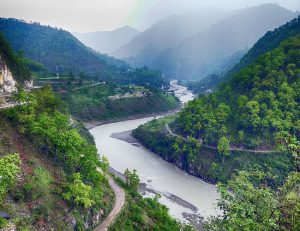
Importance of Natural Resources for Nepal’s Economy
Nepal is a country that is rich in natural resources, including water, forests, minerals, and fertile land. These resources are vital to the economic development of the country and play a crucial role in the lives of millions of people. In this article, we will discuss the importance of natural resources for Nepal’s economy.
Forests and Natural Beauty: Nepal is home to a diverse range of forest types and vegetation, making it a popular tourist destination. The country’s forests provide vital ecosystem services, including watershed protection, carbon sequestration, and habitat for wildlife. In addition, the natural beauty of the forests is a major draw for tourists, generating significant revenue for the country.
Agriculture : Agriculture is the backbone of Nepal’s economy and a significant source of livelihood for millions of people. The country’s fertile land, abundant water resources, and favorable climate conditions make it ideal for agriculture. Agriculture contributes to the country’s GDP, providing food, fiber, and other essential products.
Hydropower: Nepal is known for its abundant water resources and has the potential to generate substantial amounts of hydropower. Hydropower is a clean and renewable source of energy that can contribute to economic growth and reduce dependence on imported fuels. The development of hydropower projects has the potential to create jobs, attract investment, and improve energy security.
Minerals: Nepal is rich in minerals, including iron ore, coal, limestone, and other minerals. The exploitation of these minerals can provide a significant boost to the country’s economy, creating jobs, increasing government revenue, and attracting investment. However, it is important to ensure that mining activities are carried out in an environmentally sustainable manner.
Also Read :- Mahatma Gandhi: Inspiring a Movement for Change
In conclusion, natural resources play a crucial role in Nepal’s economy. The country’s forests, fertile land, water resources, and minerals provide vital ecosystem services and support the livelihoods of millions of people. By leveraging these resources, the country has the potential to achieve sustainable economic growth and improve the quality of life for its citizens.
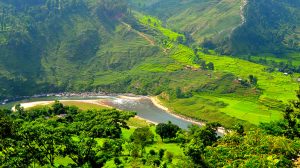
Types of Natural Resources in Nepal
Water Resources: Nepal is known for its abundant water resources with numerous rivers, lakes and glaciers. Some of the major rivers in Nepal include the Ganges, Indus, and Brahmaputra, which are crucial for agriculture, fishing, and hydropower generation.
Forest Resources: Forests cover about 30% of the total land area of Nepal and provide a wide range of benefits to the country, including fuelwood, timber, medicinal plants, and wildlife habitat.
Mineral Resources: Nepal is rich in minerals such as limestone, iron ore, coal, magnesium, and gold. These resources are essential for the construction, manufacturing, and energy industries.
Agricultural Resources: Nepal is a predominantly agricultural country, with over 80% of its population relying on agriculture for their livelihood. Rice, wheat, maize, and millet are some of the major crops grown in the country.
Wildlife Resources: Nepal is home to a diverse range of wildlife species, including tigers, rhinos, elephants, and monkeys. These resources are crucial for ecotourism, which provides a significant source of income for local communities.
Hydro Power Resources: Nepal has significant potential for hydropower generation, with numerous rivers and streams flowing through the country. This renewable energy source provides a sustainable alternative to fossil fuels and is an important contributor to the country’s economy.
Cultural and Heritage Resources: Nepal is famous for its rich cultural and heritage resources, including monuments, temples, and palaces. These resources are valuable for tourism and play an important role in preserving the country’s cultural identity.
Challenges faced by Nepal in Managing its Natural Resources
Nepal is a landlocked country in South Asia, rich in diverse and abundant natural resources. However, despite having a plethora of natural resources, Nepal faces numerous challenges in managing them effectively. Some of the major challenges faced by Nepal in managing its natural resources are discussed below.
- Limited Awareness: Nepal has a large rural population, where most people are illiterate and lack awareness about the importance of natural resources. This leads to over-exploitation and destruction of natural resources, which affects the country’s overall development.
- Lack of Government Support: The government of Nepal lacks adequate financial and technical resources to effectively manage natural resources. There is also a lack of political will to implement conservation and sustainable management programs, which results in the mismanagement of natural resources.
- Corruption: Corruption is a major challenge in Nepal, and this also extends to the management of natural resources. Lack of transparency in the allocation and management of resources often leads to their exploitation and destruction, leading to an imbalance in the ecosystem.
- Unplanned Development: Unplanned development activities such as deforestation, illegal logging, mining, and other commercial activities often cause severe damage to the environment and natural resources. This results in degradation of the environment, reducing the capacity of natural resources to provide benefits to the local communities.
- Climate Change: Climate change is a major challenge to the management of natural resources in Nepal. Changes in the pattern of rainfall and temperature affect agriculture, forestry, water resources, and other ecosystem services, which impacts the livelihoods of local communities.
- Geographical Challenges: Nepal’s mountainous geography poses a significant challenge to the management of natural resources. The country’s inaccessible terrain makes it difficult for the government to monitor and enforce conservation and sustainable management programs.
In conclusion, Nepal faces numerous challenges in managing its natural resources, but with effective government support, increased awareness, and the implementation of sustainable management programs, these challenges can be overcome. Effective natural resource management is crucial for the country’s overall development and the well-being of its people.
Also Read :- Sundar Pichai : Inspirational Biography, Education, Family and Unexpected Salary of $2M+
Role of Government in Preserving Natural Resources in Nepal
The government of Nepal plays a crucial role in preserving the country’s natural resources, which are essential for the sustainable development and well-being of its people. Natural resources in Nepal include forests, water, minerals, and wildlife, among others. These resources provide numerous benefits, such as providing livelihoods, maintaining ecological balance, and conserving biodiversity.
Forests : Forests cover approximately 37% of Nepal’s land area and are crucial for maintaining the country’s ecological balance. The government has implemented various measures to protect forests and prevent deforestation. For example, the Forest Act of 1993 prohibits the unauthorized felling of trees, and the government has established protected areas, such as national parks and wildlife reserves, to conserve wildlife and forests. Additionally, the government has launched programs to promote sustainable forest management, such as community forestry, where local communities are involved in the management and conservation of forests.
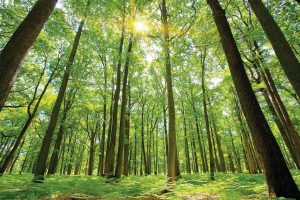
Water: Nepal has abundant water resources, including rivers, lakes, and glaciers, which are essential for agriculture, industry, and drinking water. The government has implemented various measures to conserve and manage water resources, such as the Water Resource Act of 1992 and the National Water Plan of 1992. These laws and policies aim to ensure equitable access to water and prevent water pollution.
Minerals: Nepal has rich deposits of minerals, such as limestone, quartz, and iron ore, which are essential for various industries, including construction, manufacturing, and energy. The government has implemented various measures to manage mineral resources, such as the Mines and Minerals Act of 1992, which regulates the exploration, exploitation, and conservation of minerals. Additionally, the government has established the Department of Mines and Geology to oversee the management of mineral resources and ensure sustainable and responsible mining practices.
Wildlife: Nepal is home to a rich diversity of wildlife, including rare and endangered species, such as the Bengal tiger and the one-horned rhinoceros. The government has established various protected areas, such as national parks and wildlife reserves, to conserve wildlife and prevent illegal hunting and poaching. Additionally, the government has launched programs to conserve wildlife, such as ecotourism, which generates income for local communities and supports conservation efforts.
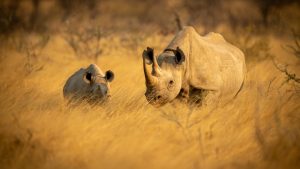
In conclusion, the government of Nepal plays a critical role in preserving the country’s natural resources, which are essential for the sustainable development and well-being of its people. The government has implemented various measures, such as laws and policies, protected areas, and programs to promote sustainable management and conservation of natural resources. The government’s role in preserving natural resources is crucial for ensuring their long-term sustainability and the well-being of future generations.
Also Read :- Xiaomi Unveils MIUI 14 Global Release for 12 Flagship Devices: Experience the New Android 13-based UI
Community-Based Natural Resource Management in Nepal
Community-based Natural Resource Management (CBNRM) is a critical approach to the sustainable management of natural resources in Nepal. This method of resource management is based on the principle of empowering local communities to participate in the management and decision-making process of the natural resources that affect their lives. The aim of CBNRM is to balance the interests of the local communities, governments, and businesses to ensure that the resources are used for the benefit of all stakeholders.

In Nepal, CBNRM has been implemented in various forms to conserve and manage the country’s vast natural resources, including forests, wildlife, water resources, and land. CBNRM is based on the idea of decentralizing the management of natural resources to the local communities. This approach has been successful in conserving and sustaining the resources while promoting the economic development of the communities.
The government of Nepal has been promoting CBNRM as a means of achieving sustainable development. The government has established various laws, policies, and institutions to support the implementation of CBNRM. For example, the Forest Act 1993 and the Community Forest Management Regulation of 1995 provide the legal framework for the management of community forests.
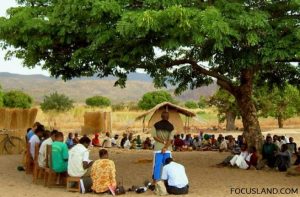
In addition, the government has established the Community-based Natural Resource Management Program (CBNRMP) to provide technical and financial support to communities in their efforts to manage natural resources. The program has been successful in creating a collaborative relationship between the communities, the government, and the private sector to conserve and manage the resources.
The success of CBNRM in Nepal is evident from the increase in the number of community-based organizations (CBOs) that are engaged in the management of natural resources. CBOs have been established in various regions of the country, and they play a critical role in the management of resources, including the protection of forests, wildlife, and water resources.

In conclusion, CBNRM is a critical approach to the sustainable management of natural resources in Nepal. The government, local communities, and the private sector must work together to ensure the successful implementation of CBNRM. This will ensure that the resources are used for the benefit of all stakeholders, including the preservation of the environment and the promotion of economic development.
Opportunities for Sustainable Development through Natural Resources in Nepal
Nepal is a country rich in natural resources and has the potential to become a leader in sustainable development. From forests to mineral resources, water resources to wildlife, Nepal has the potential to provide a high quality of life to its citizens while also preserving the environment for future generations.
One of the most significant opportunities for sustainable development in Nepal is the exploitation of its forests. With over 60% of its land area covered by forests, Nepal is one of the most forested countries in the world. These forests provide a vital source of livelihood for millions of people and are also a critical carbon sink. By promoting sustainable forestry practices and utilizing forest products, Nepal can protect its forests while also generating income and creating jobs.
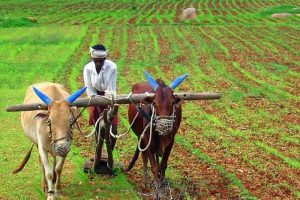
Another opportunity for sustainable development in Nepal is the utilization of its abundant water resources. With numerous rivers and lakes, Nepal has the potential to become a leader in hydroelectric power production. This not only provides a clean and renewable source of energy, but also creates jobs and drives economic growth.
Mineral resources, such as iron, copper, gold and mica, are also abundant in Nepal. The development of these resources can provide a significant boost to the economy and provide employment opportunities. However, it is important to ensure that this development is sustainable and does not harm the environment.
Nepal’s wildlife is also a major opportunity for sustainable development. With a wide range of flora and fauna, Nepal is home to many species that are found nowhere else in the world. By promoting sustainable wildlife tourism, Nepal can protect its unique wildlife while also generating income.
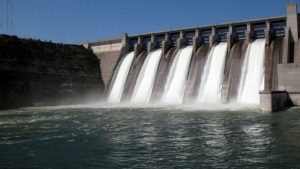
In conclusion, Nepal has numerous opportunities for sustainable development through the use of its natural resources. From forests to water resources to mineral resources, Nepal has the potential to provide a high quality of life for its citizens while also preserving the environment for future generations. By promoting sustainable practices and utilizing these resources wisely, Nepal can become a leader in sustainable development.
Conclusion and Recommendations for Sustainable Use of Natural Resources in Nepal.
In conclusion, Nepal is a country rich in natural resources, including forests, water resources, minerals, and wildlife. The sustainable use of these resources is crucial for the long-term economic and ecological health of the country. However, the current methods of resource extraction and use are unsustainable, and have led to environmental degradation, loss of biodiversity, and increased poverty.
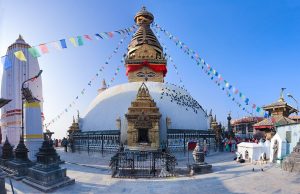
To ensure the sustainable use of natural resources in Nepal, the following recommendations should be implemented:
- Development of sustainable resource management policies: Nepal should establish and enforce policies that promote sustainable resource management practices, including limiting over-extraction, reducing waste, and promoting efficient use.
- Promotion of eco-friendly technologies: Encouraging the use of environmentally friendly technologies and practices can help reduce the impact of resource extraction and use on the environment.
- Community involvement: Engaging local communities in the management and protection of natural resources can help ensure that resources are used sustainably, and that the benefits of resource use are shared fairly.
- Education and awareness: Raising awareness about the importance of sustainable resource use among the general public is crucial to ensure that people understand the impact of their actions on the environment.
- Investment in renewable energy: Investing in renewable energy sources such as solar and wind power can help reduce the dependence on non-renewable resources, while promoting sustainable development.
Also Read :- Class 12 Exam Date 2079/2080 – An Overview for the Students for Navigating the Upcoming Challenge with Confidence
In conclusion, the sustainable use of natural resources is essential for the long-term prosperity and well-being of Nepal and its people. By implementing these recommendations, Nepal can ensure that its rich natural resources are used in a responsible and sustainable manner, for the benefit of present and future generations.
Related Posts
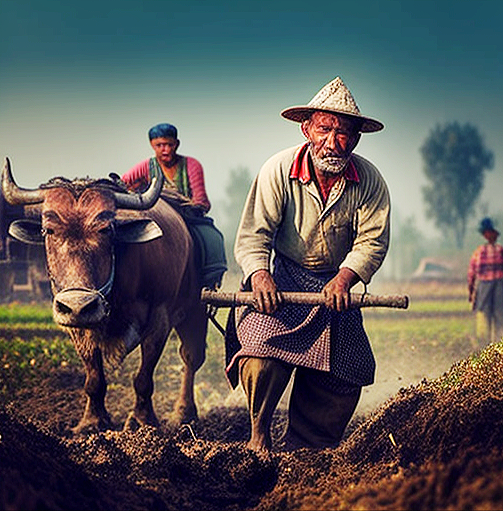
Agriculture in Nepal: An Essay with Comprehensive Analysis
One thought on “ essay on natural resources in nepal: an overview ”.
You’ve been great to me. Thank you!
Leave a Reply Cancel reply
Your email address will not be published. Required fields are marked *
Save my name, email, and website in this browser for the next time I comment.
- What Are The Natural Resources Of Nepal?
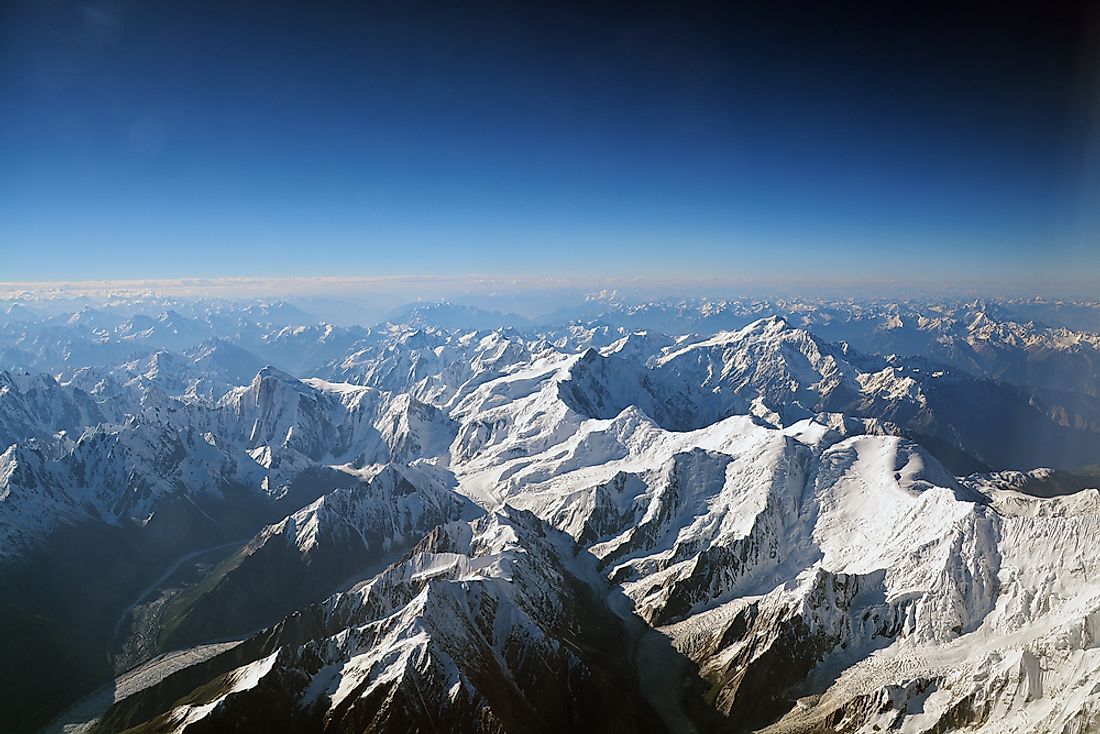
Officially known as the Federal Democratic Republic of Nepal, Nepal is a country that is located in South Asia. The landlocked country lies mostly in the Himalayas although parts of it also lie in the Indo-Gangetic Plain. The nation has an area of about 56,827 square miles, which makes it the 93 rd largest country in the world in terms of size. Regarding population, Nepal is the 48 th largest nation in the world with a population of around 26.4 million people. The country is bordered by China, India, and Bangladesh. The nation’s capital city is Kathmandu, which is also the largest city.
Unfortunately, Nepal is among the least developed states in the world due to lack of any significant resources as well as a poor transport network. Another fact that contributes to this low level of development is the landlocked nature of the country. For this reason, the country mostly relies on imports in a wide range of things such as fuel, consumer goods, construction materials, metals, and other things. The few resources in the country include precious minerals and metals (such as iron ore, copper, magnesite, and others), water resources for hydroelectric power, agricultural land, and forests.
Most of the terrain in the country, about 80%, is hilly. However, research into the country’s hilly terrain has shown that there are a few deposits of metallic, non–metallic minerals, fuel minerals, and decorative minerals. These minerals include the likes of gold, limestone, mica, iron ore, copper, and others. While there are suspected oil deposits in places such as Pyuthan, Nepalgunj, and Dailekh, there have been no confirmations on the matter. Natural gas deposits are suspected to be in places like Mustang, the Kathmandu Valley, and a few other districts.
Limestone is mined in places such as Surkhet, Hetauda, and Chovar and has always been used to produce cement in the country. Another mineral, magnesium, is mined in a number of places such as at the Kampughat mine. Despite the few mineral resources, the mine at Kampughat in the Sagarmatha Zone has deposits of about 20 million tons of ore, of which 30% is magnesium. These deposits make Nepal one of the leading global producers of magnesium.
A lack of modern technology and equally skilled labor means that the country has been unable to produce these minerals at maximum levels. Should the government make the proper investments, then the sector has the potential of creating new industries as well as create new employment opportunities. In addition, the government regulations are a discouraging factor to multinational companies wishing to invest in the sector.
Agricultural Land
Nepal is divided into three portions namely Terai, Hilly, and Himalayan. The majority of the population in Nepal is poor and still depends on farming agriculture for sustenance. Of the total area of Nepal, about 17% is suitable for agriculture, which is mostly in Terai and Hilly. Rocky land covers about 38% of the country, which is mostly in Himalayan. In addition, the area around Himalayan has mountains that are covered by snow, which further makes that section unsuitable for agriculture.
Of the two arable sections, Terai is more suitable for farming due to higher levels of fertility. For this reason, this area is sometimes known as the Green Belt of Nepal. Most of the agricultural products produced by the country come from the belt and are then exported to the other two sections of Nepal. The farmers there cultivate a number of plants including wheat, rice, oilseed, sugarcane, paddy, jute, tobacco, maize, coconuts, and many other plants. Hilly regions are also used for some agricultural activities such as the production of rice, wheat, potatoes, maize, paddy, and a few other things. After supplying the other regions, Nepal usually has little left for exportation although some products such as rice are exported to other countries.
Forest Cover
This natural resource covers a huge part (about 25.4%) of Nepal. The forest cover is classified into three types namely protected, production, and conserved forests. Forests serve several purposes such as the production of firewood as well as timber for industrial purposes. Industrial uses of trees include industries such as paper, timber, and furniture. Industries that deal with wood include the government-owned Timber Corporation of Nepal and a few others. Other people also depend on the forests to extract medicinal herbs. In addition to all of these benefits, the forest provides a habitat for animals and birds.
Revenue generation from the forests is realized in a number of ways. For example, Nepal exports its timber products to several countries although the main export destination is the nearby India. Tourism is also a source of revenue as visitors from all around the world go to Nepal for the scenery. In the hilly areas, forest cover has been helping in preventing the erosion of precious arable land. Unfortunately, deforestation is still a major problem, which is why temperatures are increasing while agricultural yields are going down.
Nepal is one of the richest countries in the world terms of water resources. In fact, only Brazil has more water. The fact that the country is leading in terms of water resources despite being landlocked shows just how much water it has. The water in Nepal comes from several sources including melting snow and mountains. Nepal has a number of major rivers including Karnali, Bhotekoshi, Koshi, Sunkoshi, Gandaki, and many more. Lakes in the country include Tilicho, Rara, and Phewa.
Primarily, water is used for a number of functions namely drinking and household use, irrigation projects, and generation of hydroelectricity. Interestingly, the abundance of these resources has done nothing to alleviate a water shortage in the capital city and other major settlements. In addition, the country’s maximum potential for the production of hydroelectricity has not been met. Estimates place the country’s potential for electricity production at a whopping 83,000 MW. Currently, the country can only produce a measly 600 MW. To improve the situation, Nepal is working on a number of projects including nine major power plants while considering another 27 sites for future exploration. In addition, the government has a number of projects such as the Melamchi water project to supply water to Kathmandu.
More in Economics

The Oldest Companies Still Operating Today

Which Country Eats the Most Ice Cream?

Countries That Consume The Most Sugar

Countries with the Lowest GDP

The Richest Countries In Europe

The 10 Largest Iron Ore Mines in the World
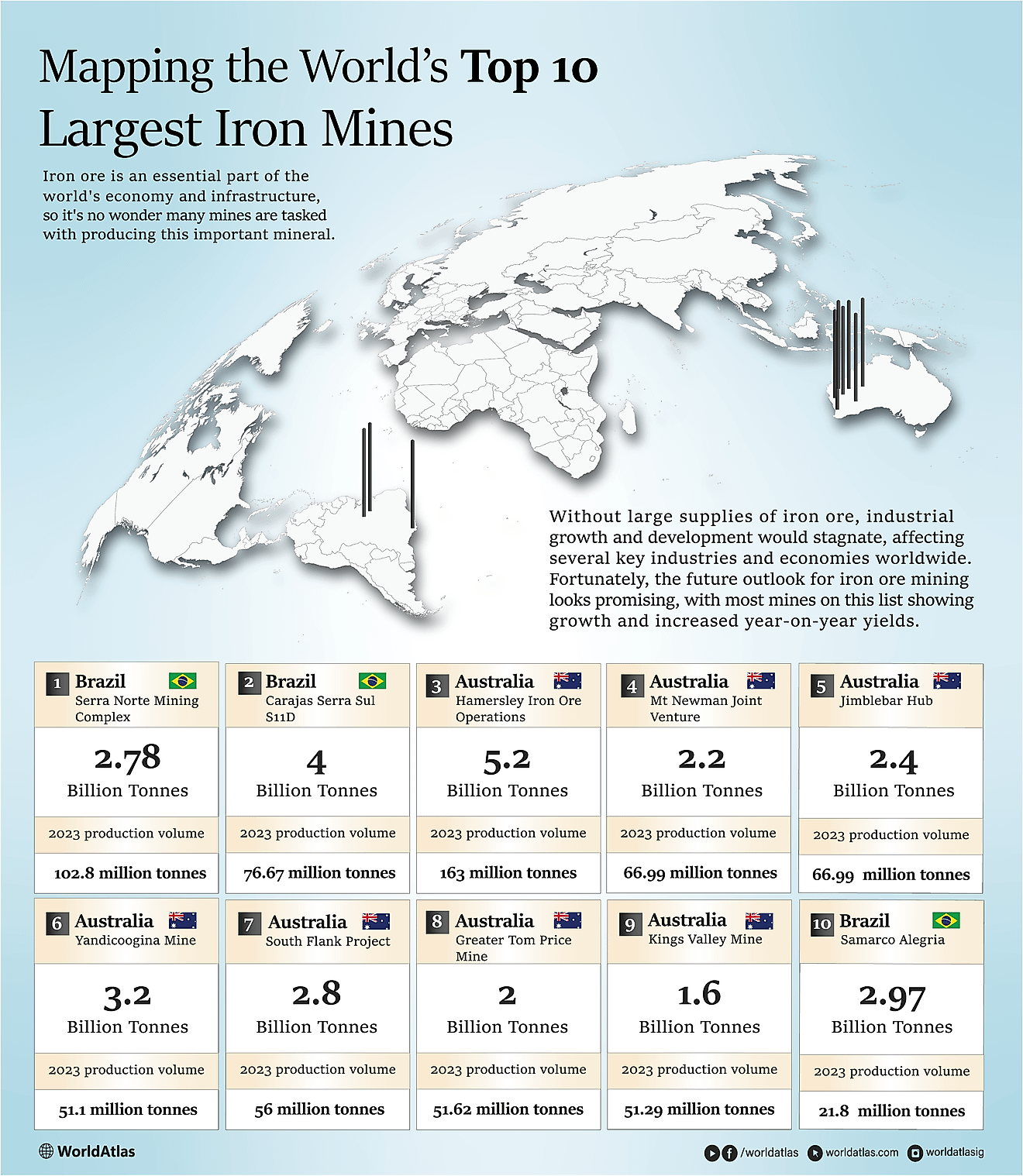
The 10 Largest Iron Mines In The World
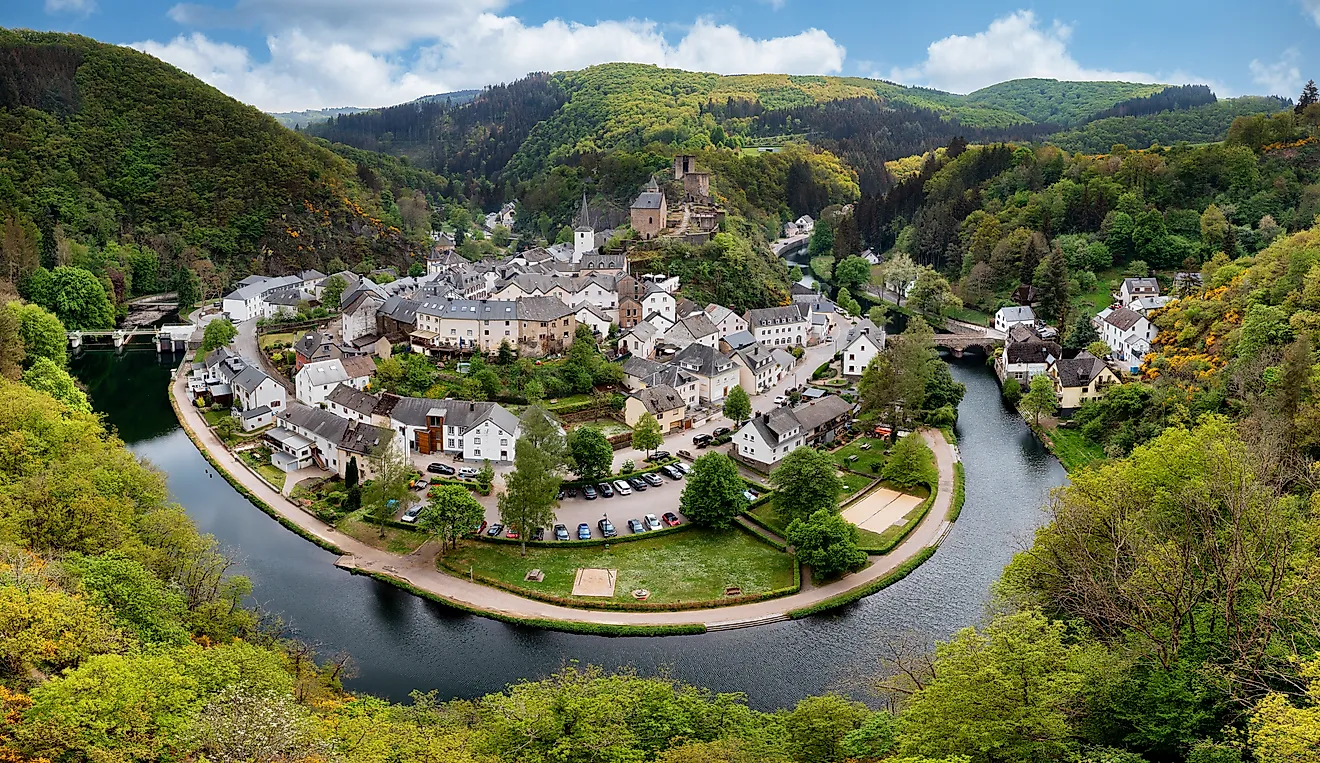
The Richest Landlocked Countries In The World
- Login / Register

- Intenet & Communication
- Electronics
- Information Technology
- Data science and AI
- Biotechnology
- Marketing & Sales
- Startups & Business
- Imports & Exports
- Stock & Investment
- Manufacturing
Natural Resources
- Agricultural
- Religion and Culture
- Hotel and Tourism
- Metals & Mining
- Infrastructure
- Renewable Energy
Join Our Newsletter
Join our subscribers list to get the latest news, updates and special offers directly in your inbox
Natural Resources of Nepal: Key to Development
Explore the natural resources of nepal, such as its mineral, forestry, and water resources. learn the importance of properly utilizing natural resources for the sustainable development of nepal..

Natural resources are free gifts from nature, which include land, climates, forests, water, minerals, etc. Nepal is rich in natural resources. If Nepal could utilize the available natural resources properly, it would be developed within a short period of time. Most developed countries have got prosperity from the proper utilization of natural resources, and only the proper utilization of natural resources makes a country prosperous.
Water Resources:
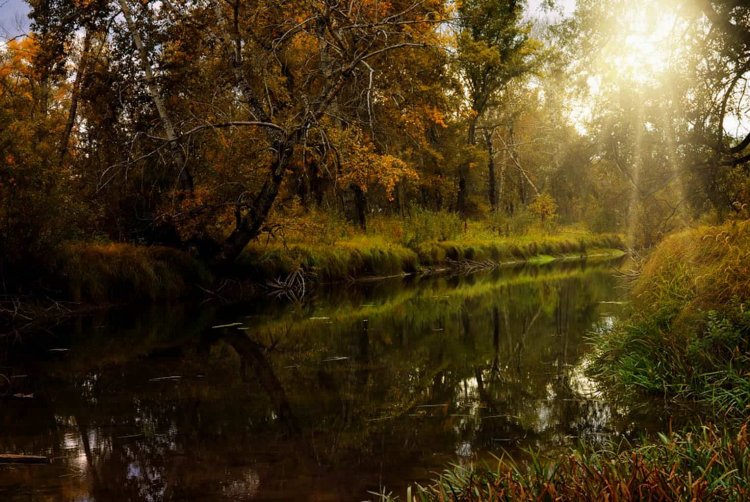
Among all the natural resources of Nepal, water resources are regarded as one of the most important. There are more than six thousand rivers, including major and minor, with a length of more than 4500 Km. There are a large number of lakes and springs as well. Koshi, Narayani, Gandaki, Rapti, Veri, Karnali, Mahakali, etc. are the major rivers of Nepal. Likewise, Rara, Phewa, Begnas, Tilicho, etc. are the major lakes. Nepal's regular sources of water resources are the Himalayan glaciers and rainfall. With regard to water resources, Nepal stands in the 43rd position in the world with approximately 210 cubic kilometers of total renewable internal freshwater resources. Water resources are also termed "white gold" for the Nepalese economy. If the available water resources are properly utilized, Nepal can easily be converted into a developed country.
Importance of water resources:
Development of agriculture.
The development of agriculture entirely depends upon the development of irrigation in Nepal. Nepalese agriculture still depends on monsoon rain. The development of irrigation and modernization of agriculture depend directly on water resources.
Development of transportation and communication
Energy generated from water resources can be used to run electric means of transport such as electric buses, cable cars, electric trains, ropeways, and other electric vehicles. Similarly, with proper water resource utilization, means of communication such as telephone, internet, fax, radio, TV, and so on can be developed.
Tourism development
Tourism in Nepal has a close relationship with natural setting. Since rivers, waterfalls, natural springs, lakes, etc. add the natural beauty of the country; it would help to develop tourism industry by providing different facilities like rafting, boating, and swimming and etc.
Basis of good health
Development of water resources helps to provide pure drinking water which leads to basis of healthy life. It helps not only to increase the productivity of labour but also to raise of living standard of people.
Employment opportunity
The development of water resources helps to create more employment opportunities. Since hydroelectricity helps to develop agriculture, tourism, etc. the economic activities in the country increases.
Uses of water resources:
Hydroelectricity.
One of the main uses of water resources is hydroelectricity production. The first hydroelectricity project is the Pharping hydroelectricity project, which was constructed in 1968 BS during the Rana rule. Hydroelectricity is accessible to 77 districts of the country, and 93% of the population has access to electricity.
Irrigation is another important use of water resources in Nepal. It is known as the lifeblood of agriculture. Without irrigation facilities, the development of agriculture is not possible, and without the development of agriculture, economic development is not possible in Nepal. One of the main reasons behind the slow development in the agriculture sector is the lack of adequate irrigation facilities. Of the country's total 2,641,000 hectares (18%) of arable land, the irrigation command area is only 1,766,000 hectares (67%). By 2020/21, the command area of irrigation facilities had reached 58.07% of total irrigable land. However, around the year, irrigation facilities are available on 33% of total irrigable land.
Drinking water
Drinking water is essential for human existence. Human life is impossible without drinking water. Although Nepal is rich in water resources, people here face an acute shortage of safe drinking water in both urban and rural areas. The supply of sufficient safe drinking water to all the people in the state creates a good environment for achieving prosperity in the economy. According to the census of 2068, 47.84% of people have access to pipeline drinking water and 35% use the sallow-tube well for drinking water. According to the economic survey 2020/21, 91% of people have access to basic drinking water services. However, only 23% of people have access to high or medium-level drinking water services. The fifteenth plan (2019/20-2023/24) has set the target of providing drinking water facilities to 99% of the total population.
Forest Resource:
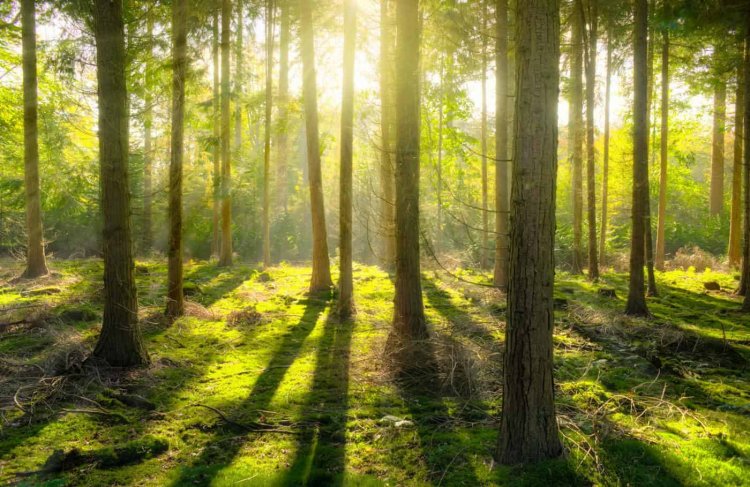
Forest resources are the other most important natural resources of Nepal. It stands in a significant position for economic development as well as to maintain the environmental balance of Nepal. Forest resources are the most important for the economic development of a nation as well as for the conservation of the natural environment. Nepal was very rich in forest resources in the past. It is evident from the old saying "Hariyo Ban Nepal Ko Dhan" (the green forest is the wealth of Nepal). Nowadays, the condition of Nepalese forest resources is not as good as it was in the past. In Nepal, forests have covered 5.962 million hectares of land and wooded land has covered 0.648 million hectares of land. Altogether, the total area covered by forest is 44.8% of the total land area. By province, Karnali province occupies the highest forest areas, and province No.2 occupies the lowest.
Importance of Forest Resources:
Source of energy.
Forest resources are the main source of energy in Nepal. Firewood is the cheapest source of energy that comes from the forest. According to the 2011 census, only firewood fulfils 64% of the total energy demand of Nepal in household use.
Source of raw material
The raw materials for different industries, such as paper, medicine, plastics, matches, and furniture, come from the forest. As a result, the development of such industries is heavily reliant on a consistent and sufficient supply of raw materials from the forest.
Sources of foreign currency
Various products such as timber, herbal products, industrial raw materials, and wooden handicrafts are collected as well as produced from the forest and can be supplied to neighboring countries to earn foreign currency.
Sources of water
Most of the water resources originate from green hills and mountains. Dense forests absorb rainwater, regulate it into the earth through their roots and help to preserve water at inner levels, and enrich the water table constantly.
Maintain environmental and ecological balance
Forests influence local and regional climates, preserve soil and in the case of watersheds, protect soil downstream from floods. Forest resource also provides internal greenery and natural beauty to us. It is very important to maintain an ecological balance between wildlife habitats and human beings.
Mineral Resource:
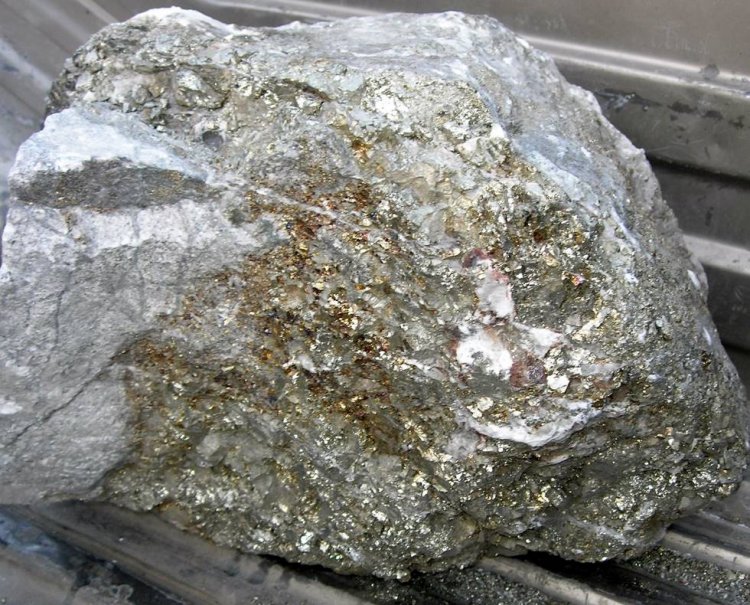
It is very important to have natural resources for the economic development of a nation. Different types of minerals, such as gold, silver, copper, coal, gas, petroleum products, limestone, iron, etc., which are found in the womb of the earth are mineral resources. Mineral resources play an important role in the economic development of a nation. It is said that Nepal is rich in mineral resources. However, the extent to which commercial utilization of mineral resource deposits is possible is yet to be known. Nepal has many kinds of mineral deposits such as iron, copper, limestone, natural gas, coal, lead, magnetic, nickel, marble, and mica in different parts of the country. Mineral exploration in a scientific manner started in Nepal some 73 years ago. Some of the mineral resources have been used in industrial production, like cement, industrial lime, dead burnt magnetite, polished marble, etc.
Importance of mineral resources:
Employment opportunities.
Mineral industries require unskilled, skilled, and highly skilled manpower, which creates employment opportunities for all types of human resources.
Development of new industries
The development of new industries from cottage/micro industries to large-scale industries depends on mineral resources. Agriculture limes, zinc, and cement are the main industries of Nepal based on mineral resources.
Source of foreign currency
If Nepal extracts large quantities of minerals such as natural gas, diesel, petrol, kerosene, iron, copper, etc. it can save and earn a large amount of foreign currency.
Modern means of transport, such as air, road, and water, and means of communication, such as television, radio, computers, telephones, faxes, etc., are produced by the utilization of mineral resources. Hence, the development of transport and communication is highly dependent on the proper development of mineral resources.

Supply of construction material
Different development projects are in operation in different sectors of the economy. Development projects need a high amount of construction materials such as brick, cement, steel, copper, etc. which can be supplied cheaply and adequately if we develop the mineral resource properly.
Frequently Asked Questions (FAQ)
What natural resources are important to nepal and why, what is the most prominent natural resource in nepal, what are the natural resources of nepal, how do water resources contribute to nepal's development, how do forest resources contribute to nepal's economy, what mineral resources are found in nepal, how do mineral resources contribute to employment opportunities in nepal.
- Natural resources of Nepal
- water resources of Nepal
- Forest resources of Nepal
- Mineral resources of Nepal
- resources of Nepal
Previous Article
The Business Model of Online Insurance
Next Article
Top 5 Richest Companies in Nepal of 2024
What's your reaction.

Nepal Database Writer
Related Posts
Rhododendron: National Flower of Nepal
Anisha Khanal Dec 2, 2023 0
Stacks of lakes in Nepal
Nepal Database Writer Oct 11, 2022 0
Why You Should Travel to Nepal at Least Once in Your Lifetime
WorldVib Aug 15, 2024 0
The Himalayas
Nepal Database Writer Oct 10, 2022 0
Rising Rice: The Emergence in Nepal
Rima jha Jun 5, 2023 0
Mount Lhotse: Climbing Achievements & Challenges
Swostika Shrestha Nov 7, 2023 0

Enquiry To Travel Guide
Popular posts.
Top 5 richest person in Nepal
Nepal Database Writer May 30, 2023 0
Nepal Database Writer Sep 12, 2022 3
Sati's Curse: Nepal's Enduring Legacy of Despair and Hope
Rima jha Sep 26, 2023 0
Brain Drain in Nepal: Causes, Consequences, and Solutions
Nepal Database Writer Jun 23, 2023 0
List of Emergency Contact Numbers in Nepal for Tourists...
WorldVib Oct 9, 2024 0
Recommended Posts
WorldVib Oct 23, 2024 0
How to Meditate - Guide for Beginners
WorldVib Oct 21, 2024 0
Street Food that you must try when you visit to nepal
WorldVib Oct 10, 2024 0
Learn Basic Nepali Words and Language Before Traveling...
WorldVib Oct 7, 2024 0
Random Posts
Everything you want to know about sherpa community.
Vivaan Bhatt Sep 30, 2024 0
Explore the Sherpa community's rich culture, spiritual beliefs, and their exquisite...
Digitalize your business in Ecommerce Platform: A Marvelous...
sanjivan dhakal Apr 26, 2024 0
You can find some of the general concept of E commerce
Building Ecommerce in Nepal: Create e-commerce guide in...
Ashish Bhandari Oct 24, 2023 0
Grow your e-commerce business in Nepal with the best e-commerce provider. Complete...
Iphone 15 and Iphone 15 Pro in Nepal: Features and Prices
Vivaan Bhatt Sep 13, 2023 0
Discover the latest iPhone 15 and iPhone 15 Pro in Nepal. Explore their features,...
Current Situation of Nepalese Agricultural Product
Nepal Database Writer Mar 25, 2023 0
Discover the current state of Nepalese agricultural products and the key factors...
Popular Tags
- personal finance
- cultural heritage
- Trekking in Nepal
- Agriculture
Voting Poll
Traditional Ecological Knowledge of Resource Management in Nepal
- First Online: 02 January 2023
Cite this chapter

- Basanta Paudel 3 , 4 , 5 ,
- Til Prasad Pangali Sharma 4 , 5 &
- Yili Zhang 3 , 6
337 Accesses
1 Citations
4 Altmetric
Natural resources are very useful for human beings, and land, air, water, solar energy, natural vegetation, and mineral resources are the dominant resources of the Earth. Humans from the beginnings of civilizations have used these major resources. This chapter deals with the status of natural resources in Nepal including traditional ecological knowledge of resource management in different regions of the country, as well as its importance and future perspectives. Anthropogenic activities and interactions have modified the natural distribution of the resources involved in traditional ecological knowledge, such as terraced land for agriculture, river water for irrigation, natural vegetation for timber and medicinal uses, and mineral resources for different domestic and industrial purposes. In the case of Nepal, land, natural vegetation, water, mineral resources, tourism, biodiversity, and protected areas are major and noticeable resources of the country. The traditional ecological knowledge system has different techniques for resource management and use of the different ecological regions of Nepal. People applied their indigenous knowledge to manage local resources based on geographical and climatic scenarios of the region. Transhumance pastoralism, harvesting, and collecting of valuable medicinal flora in the Mountain region; sedentary and shifting cultivation practices in the Hill region; and the stall-fed system in the Tarai region are the most common examples of traditional ecological knowledge for resource management in Nepal. The government needs to promote such traditional ecological knowledge for the proper use and protection of the country’s natural resources for sustainable resource management. Such actions will provide a win–win situation for nature and society.
This is a preview of subscription content, log in via an institution to check access.
Access this chapter
Subscribe and save.
- Get 10 units per month
- Download Article/Chapter or eBook
- 1 Unit = 1 Article or 1 Chapter
- Cancel anytime
- Available as PDF
- Read on any device
- Instant download
- Own it forever
- Available as EPUB and PDF
- Compact, lightweight edition
- Dispatched in 3 to 5 business days
- Free shipping worldwide - see info
- Durable hardcover edition
Tax calculation will be finalised at checkout
Purchases are for personal use only
Institutional subscriptions
Similar content being viewed by others

Ñande reko : the fundamentals of Guaraní traditional environmental knowledge in southern Brazil

A Review on Traditional Ecological Knowledge and Its Role in Natural Resources Management: North East India, a Cultural Paradise

Natural resource degradation tendencies in Ethiopia: a review
Amatya SM, Cedamon E, Nuberg I (2018) Agroforestry system and practices in Nepal. Sopan Press Pvt. Ltd., Dillibazar, Kathmandu
Google Scholar
Aryal KP, Kerkhoff EE (2008) The right to practice shifting cultivation as a traditional occupation in Nepal: a case study to apply ILO conventions nos. 111 (employment and occupation) and 169 (indigenous and tribal peoples). International Labour Organization
Bajracharya DM (1996) Phyto-geography of Nepal Himalaya. Tribhuvan Univ J 19(2):57–76
Article Google Scholar
Barbier EB (2005) Natural resources and economic development. Cambridge University Press
Book Google Scholar
Beetz A (2002) Agroforestry overview; Horticulture System Guide. National Sustainable Agricultural Information Service. ATTRA, pp 1–5
Berkes F (1993) Traditional ecological knowledge in perspective. Traditional ecological knowledge: concepts and cases, p 1
Berkes F, Folke C, Gadgil M (1994) Traditional ecological knowledge, biodiversity, resilience and sustainability. In: Biodiversity conservation, pp 269–287. Springer
Du X, Zhou D, Chao Q, Wen Z, Huhe T, Liu Q (2020) The history of human civilization. In: Overview of low-carbon development, pp 1–40. Springer
Ghartichhetri DB, Cheng S, Xu Z, Bhandari J, Wang L, Liu X (2016) Community forestry and livelihood in Nepal: a review. J Animal Plant Sci 26(1):1–12
Ghimire SK, Mckey D, Aumeeruddy-Thomas Y (2006) Himalayan medicinal plant diversity in an ecologically complex high altitude anthropogenic landscape, Dolpo Nepal. Environ Conserv 33(2):128–140
Ghorashi AH, Rahimi A (2011) Renewable and non-renewable energy status in Iran: art of know-how and technology-gaps. Renew Sustain Energy Rev 15(1):729–736
Havranek T, Horvath R, Zeynalov A (2016) Natural resources and economic growth: a meta-analysis. World Dev 88:134–151
Ingty T (2017) High mountain communities and climate change: adaptation, traditional ecological knowledge, and institutions. Clim Change 145(1):41–55
Ives JD, Messerli B (2003) The Himalayan dilemma: reconciling development and conservation. Routledge
Jodha N, Banskota M, Partap T (1992) Strategies for the sustainable development of mountain agriculture: an overview. Sustain Mountain Agricul Perspect Issues 1:3–40
Kafley H, Khadka M, Sharma M (2009) Habitat evaluation and suitability modeling of Rhinoceros unicornis in Chitwan National Park, Nepal: a geospatial approach. XIII World Forestry Congress. Buenos Aires, Argentina
Kaphle KP (2011) Mineral resources of Nepal and their present status. J Nepal Geol Soc
Karkee K (2004) Land degradation in Nepal: a menace to economy and ecosystems. Lund University, Sweden
Leang S, Ma SY, Thomson J, Bombay BJ, Spanos CJ (1996) A control system for photolithographic sequences. IEEE Trans Semicond Manuf 9(2):191–207
Lv T, Wang L, Xie H, Zhang X, Zhang Y (2021) Exploring the global research trends of land use planning based on a bibliometric analysis. Curr Status Fut Prospect Land 10(3):304. https://www.mdpi.com/2073-445X/10/3/304
Lyle J (1999) Design for human ecosystems: landscape, land use, and natural resources. Island Press
Mahat TBS (1987) Forestry-farming linkages in the mountains. ICIMOD, Kathmandu
Menzies CR (2006) Traditional ecological knowledge and natural resource management. University of Nebraska Press
Metz JJ (1997) Vegetation dynamics of several little disturbed temperate forests in east central Nepal. Mt Res Develop 333–351
MoFE (2019) National Level Forests and Land Cover Analysis of Nepal using Google Earth Images. F. R. A. T. C. Ministry of Forests and Environment. http://frtc.gov.np/old/noticefile/Forest%20and%20Land%20Cover%20Analysis_final_report_1550056739.pdf
MoICS (2021) Precious & Semi-Precious Stones. Ministry of Industry, Commerce and Supplies (MoICS) Trade and Export Promotion Centre, Government of Nepal, Kathmandu, Nepal. https://www.tepc.gov.np/major_products/full_content/precious-semi-precious-stones
Nath P (2021) Some perceptions on natural resources. The Basics of Human Civilization, pp 97–101. CRC Press
Nesheim I, Dhillion SS, Anne Stølen K (2006) What happens to traditional knowledge and use of natural resources when people migrate? Hum Ecol 34(1):99–131
Olsson P, Folke C (2001) Local ecological knowledge and institutional dynamics for ecosystem management: a study of Lake Racken watershed. Sweden. Ecosystems 4(2):85–104
Pachauri RK, Allen MR, Barros VR, Broome J, Cramer W, Christ R, Dasgupta P (2014) Climate change 2014: synthesis report. Contribution of Working Groups I, II and III to the fifth assessment report of the Intergovernmental Panel on Climate Change. Ipcc
Pandey K, Adhikari Y, Weber M (2016) Structure, composition and diversity of forest along the altitudinal gradient in the Himalayas, Nepal. Appl Ecol Environ Res 14(2): 235–251
Paudel A, Markwith SH, Konchar K, Shrestha M, Ghimire SK (2020) Anthropogenic fire, vegetation structure and ethnobotanical uses in an alpine shrubland of Nepal’s Himalaya. Int J Wildland Fire 29(3):201–214
Paudel B (2021) Geography of Nepal Himalaya. Nepal Mountain Academy, Government of Nepal. ISBN: 978-9937-9478-2-4
Paudel B, Adhikari BR (2021) Land Use and Land Cover. In: Ojha RB, Panday D (eds) The Soils of Nepal. Springer International Publishing, pp 41–51. https://doi.org/10.1007/978-3-030-80999-7_5
Paudel B, ZhangY LS, Liu L, Wu X, Khanal NR (2016) Review of studies on land use and land cover change in Nepal. J Mt Sci 13(4):643–660. https://doi.org/10.1007/s11629-015-3604-9
Paudel DP (2019) Present status and utilization of the mineral resources in Nepal. The Third pole J Geogr Educat 85–96
Pearce DW, Turner RK (1990) Economics of natural resources and the environment. Johns Hopkins University Press
Pokhrel J (2018) Land use and land cover changes in Chitwan National Park and adjacent areas from 1988 to 2017. The University of Arizona
Rai SC (2007) Traditional ecological knowledge and community-based natural resource management in northeast India. J Mt Sci 4(3):248–258
Rimal B, Zhang L, Stork N, Sloan S, Rijal S (2018) Urban expansion occurred at the expense of agricultural lands in the Tarai region of Nepal from 1989 to 2016. Sustainability 10(5):1341
Sadoff CW, Grey D (2002) Beyond the river: the benefits of cooperation on international rivers. Water Policy 4(5):389–403
Sapkota IP, Tigabu M, Odén PC (2009) Spatial distribution, advanced regeneration and stand structure of Nepalese Sal (Shorea robusta) forests subject to disturbances of different intensities. For Ecol Manage 257(9):1966–1975
Shrestha BB, Jha PK (2009) Habitat range of two alpine medicinal plants in a trans-Himalayan dry valley, Central Nepal. J Mt Sci 6(1):66–77
Shrestha MR, Rokaya MB, Ghimire SK (2005) Vegetation pattern of trans-Himalayan zone in the North-West Nepal. Nepal J Plant Sci 1:129–135
Takimoto A, Nair PR, Nair VD (2008) Carbon stock and sequestration potential of traditional and improved agroforestry systems in the West African Sahel. Agr Ecosyst Environ 125(1–4):159–166
Tarolli P, Preti F, Romano N (2014) Terraced landscapes: from an old best practice to a potential hazard for soil degradation due to land abandonment. Anthropocene 6:10–25
Thakur B, Thakur RR (2021) Early and modern paradigms in natural resource management: global and Indian experiences. In: Thakur B, Thakur RR, Chattopadhyay S, Abhay RK (eds) Resource management, sustainable development and governance, Springer, pp 27–58
Uddin K, Shrestha HL, Murthy MSR, Bajracharya B, Shrestha, Gilani H, Dangol B (2015) Development of 2010 national land cover database for the Nepal. J Environ Manage 148, 82–90. https://doi.org/10.1016/j.jenvman.2014.07.047
Upadhyay M, Yadava M (2009) Agroforestry system practiced in Nepal. Tribhuvan University. Institute of Forestry, Office of the Dean, Pokara
USAID (1990) Natural resource managment: AID's experience in Nepal. https://pdf.usaid.gov/pdf_docs/PNAAX247.pdf
Van De; Wetering SB (1995) A new century for natural resources management. Island Press
Yadava A (2009) Economical response of cultivation of lemon grass (C. flexuosus’ CKP-25’) under agroforestry system. Indian J Agroforestry 11(2):66–70
Yogacharya KS (1996) Assessment of water resources of Nepal and its economic value
Download references
Acknowledgements
We acknowledge the support from The Second Tibetan Plateau Scientific Expedition and Research of China (Grant No., 2019QZKK0603), and Special Research Assistant Program, Institute of Geographic Sciences and Natural Resources Research, Chinese Academy of Sciences (Grant No., Y9K90010AJ). We are very grateful to the editors and reviewers for their valuable time.
Author information
Authors and affiliations.
Key Laboratory of Land Surface Pattern and Simulation, Institute of Geographic Sciences and Natural Resources Research, Chinese Academy of Sciences, Beijing, 100101, China
Basanta Paudel & Yili Zhang
Nepal Geographical Society, Kathmandu, 44600, Nepal
Basanta Paudel & Til Prasad Pangali Sharma
Institute of Fundamental Research and Studies, Kathmandu, 44600, Nepal
University of Chinese Academy of Sciences, Beijing, 100049, China
You can also search for this author in PubMed Google Scholar
Corresponding author
Correspondence to Yili Zhang .
Editor information
Editors and affiliations.
Department of Geography, Delhi School of Economics, University of Delhi, New Delhi, Delhi, India
Suresh Chand Rai
Department of Geography, Shivaji College, University of Delhi, New Delhi, Delhi, India
Prabuddh Kumar Mishra
Rights and permissions
Reprints and permissions
Copyright information
© 2022 The Author(s), under exclusive license to Springer Nature Switzerland AG
About this chapter
Paudel, B., Pangali Sharma, T.P., Zhang, Y. (2022). Traditional Ecological Knowledge of Resource Management in Nepal. In: Rai, S.C., Mishra, P.K. (eds) Traditional Ecological Knowledge of Resource Management in Asia. Springer, Cham. https://doi.org/10.1007/978-3-031-16840-6_8
Download citation
DOI : https://doi.org/10.1007/978-3-031-16840-6_8
Published : 02 January 2023
Publisher Name : Springer, Cham
Print ISBN : 978-3-031-16839-0
Online ISBN : 978-3-031-16840-6
eBook Packages : Social Sciences Social Sciences (R0)
Share this chapter
Anyone you share the following link with will be able to read this content:
Sorry, a shareable link is not currently available for this article.
Provided by the Springer Nature SharedIt content-sharing initiative
- Publish with us
Policies and ethics
- Find a journal
- Track your research

We apologize for the inconvenience...
To ensure we keep this website safe, please can you confirm you are a human by ticking the box below.
If you are unable to complete the above request please contact us using the below link, providing a screenshot of your experience.
https://ioppublishing.org/contacts/

IMAGES
VIDEO
COMMENTS
In this essay, we will take a closer look at the natural resources in Nepal, including their types, distribution, and importance. We will also examine the challenges that Nepal faces in managing these resources effectively and the efforts being made to conserve them.
The few resources in the country include precious minerals and metals (such as iron ore, copper, magnesite, and others), water resources for hydroelectric power, agricultural land, and forests. Minerals. Most of the terrain in the country, about 80%, is hilly.
The natural resources of Nepal include water resources (rivers, lakes, and glaciers), forest resources (wooded areas), and mineral resources (such as gold, silver, copper, coal, gas, and limestone). How do water resources contribute to Nepal's development?
It has diverse climatic zones, from tropical to nival ecosystems, and glaciers. These diverse conditions have a significant impact on the country’s climate and biodiversity. This chapter describes Nepal’s physical features, climate, hydrology, biodiversity, soil, and land use patterns.
This chapter outlines how Nepal’s natural resources can bolster economic growth through their contributions to key sectors. Although minerals deposits are low and insufficient to move Nepal onto an extractive-based economy, Nepal is rich in renewable resources including soils, water, forests and natural beauty. This chapter
From the perspective of exploring ecological traditional knowledge for natural resources, i.e., land, water, forests, and mineral resources management in Nepal, this chapter deals with the general status of natural resources and traditional ecological knowledge, as well as their management in different ecological regions of the country.
the management of Nepal's natural resources. To master the art of analyzing relaticnships between economic development and environmental change will require more experience, pursued through further case studies. The study was undertaken by OED staff and local and international consultants.
In this study, we therefore aimed to: (a) analyze current knowledge on trends in NCPs; (b) identify the direct and indirect drivers associated with these trends; and (c) understand how changes in NCPs affect progress towards the SDGs in Nepal using the IPBES conceptual framework.
A proper and dynamic understanding of the role of biodiversity in the traditional food–water–energy nexus changes the scope of what research, extension, and investment interventions are needed to ensure water, food, and health security or a resilient food system in Nepal.
NATURAL RESOURCES AND SOCIAL JUSTICE AGENDA IN NEPAL: FROM LOCAL EXPERIENCES AND STRUGGLES TO POLICY REFORM. Hari P. Dhungana1 and Gyanu Maskey2. ABSTRACT. greater community control over natural resources have been profound in recent decades in Nepal and beyond. These demands go together .